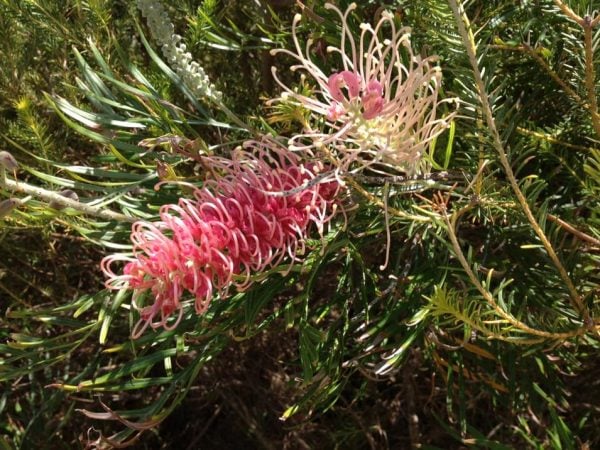Remember these tips are a guide only. Your individual situation may require professional help.
This December is when temperatures are usually high and some years it’s also dry in our region,
So some really important things to get right in the garden in summer, are watering and moisture retention in the garden. The main way to make this work well is to get your soil right, so that it can take in and hold the right amount of moisture for the plants you want to grow and for the life of your soil. And of course, drainage must be good in gardens or there will be too much water. The first step is to add organic material, such as cow manure and compost. This can be placed on the top of the garden for exiting beds.
The next step is to place a good layer of mulch over the garden beds, so that the organic material doesn’t dry out. Mulch also suppresses weeds, holds soil moisture and keeps the soil from being too hot or too cold. With this in place, your soil will benefit from the work of worms and microbes to improve it’s texture and make it healthier, with more available nutrients for your plants. The mulch Ive been using a lot is Forest Mulch, which is aged tree loppers mulch. This can be obtained from landscape suppliers.
That only leaves moisture and watering, which is so important in the hot, dry months. My approach is to usually avoid micro spray irrigation systems, as I don’t find them to be very effective. I prefer drip irrigation. Ideally, this is combined with hand watering of the whole garden bed. This means you will have deep watering and the top few centimetres of the soil will also be moist. These are general rules only, so your specific situation may vary. When it’s really dry, you often need a combination of drip and overhead watering. Established small trees and bushes usually have roots that go down to the subsoil and that is often comprised of clay. Things like Citrus and Azaleas have feeder roots close to the surface, so they need moisture up there. It’s always best to water in the mornings, if possible. That way, excess moisture can evaporate from leaves and so, avoid fungal and pest problems.
At the moment Frangipanis, Agapanthus, crepe Myrtle, Gardenias and other summer flowering plants would be adding colour to the garden. Every season has its star performers. Plants which do well in the heat and which will be flowering now include Tulbaghia, or Society Garlic.Geraniums are also a great plant in the hot weather. They’re great for filling in gaps in hot spots, provided you give them a watering. You can grow Geraniums and Pelargoniums easily from cuttings. If you plant Summer Crocus, they’ll tough out the hot times and flower in the warm months after periods of rain. Seaside Daisies can become messy but they’re also great.
Vegetable gardens should still be doing okay now if you are able to keep up the watering, or if we happen to have a bit more rain. Some recent years have seen heat waves have made vegetable gardening a tough affair.
In December you can usually grow an exhaustive list of summer vegetables and herbs. One tip to remember is to keep some of your lettuce, Coriander, parsley and others which have gone to seed. That way you can have an abundance of free seedlings which will just turn up on their own.
Tasks which need doing in gardens now include trimming of hedges and shrubs such as Camellias, further mulching of gardens, removing and treatment of pests on Citrus such as stinkbugs and Citrus leaf mine (if you let them get a hold in spring), treatment of Azaleas to prevent Lace bugs, deep watering of lawns and regular summer tip pruning of roses. Other than that, it’s a good idea to enjoy the long days of summer by spending some time in your gardens. The rewards are there for those who do. Just pick your times to avoid the heat and the mossies!




